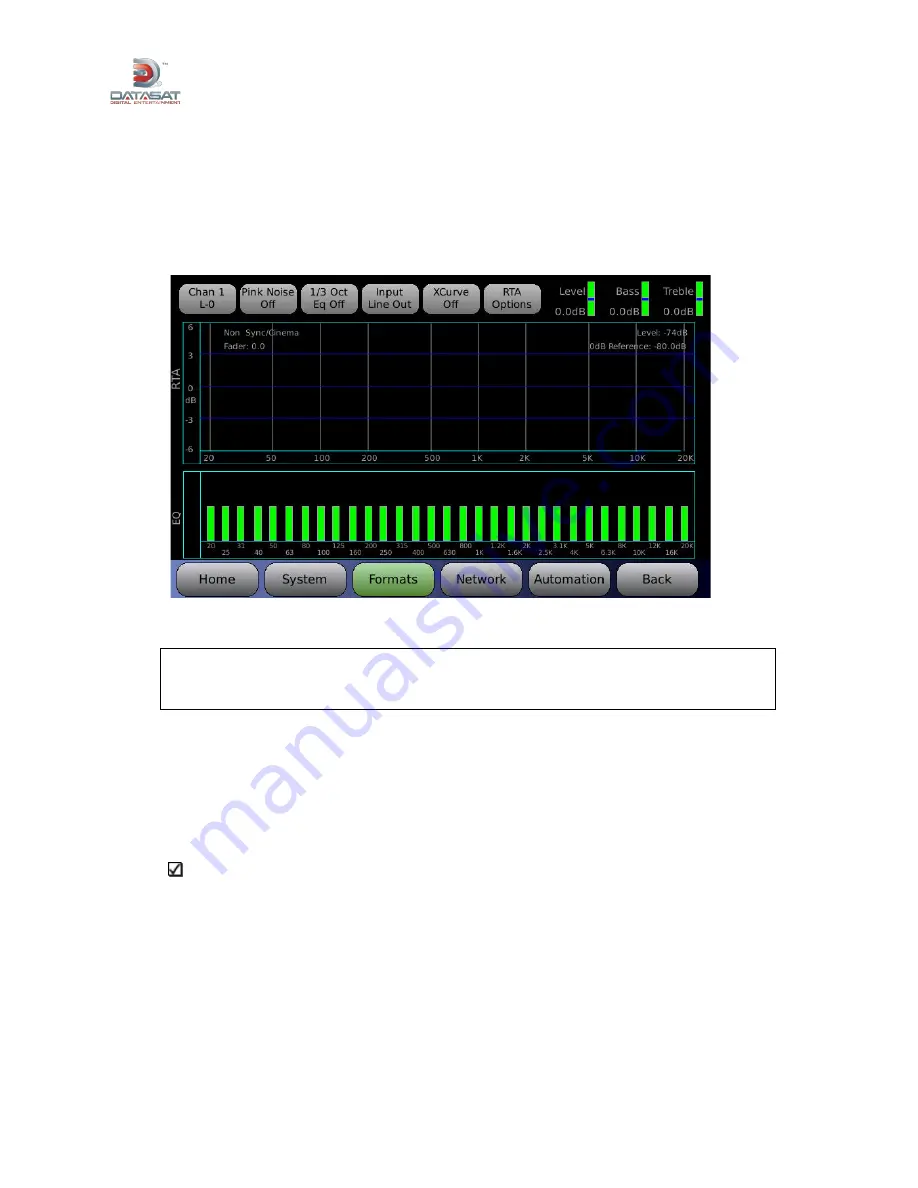
AP20 Installation and Operating Guide
Page 38
AP20 Installation & Operating Guide
Document # 9301H39200 Ver. 1.1
2.9.2
Perform the EQ
If using Dirac Live, please refer to the Dirac Live Theater Setup manual. For an overview, see
Using Dirac Live® to Tune the Auditorium
, page 42.
The AP20 contains a full suite of 1/3 Octave EQ filters that are “traditional” cinema processor
filters. If using AP20 1/3 Octave EQ, complete the following steps.
Menu > Formats > EQ Setup > Third Octave EQ
Figure 17. Third Octave EQ Screen
NOTE:
Touching a green bar in the EQ section (lower panel) will select that frequency
and allow you to adjust the dB level of that frequency by rotating the fader knob. (On the
laptop running AP20 Proxy, use the up/down arrow keys.)
Use a single or multiplex microphone arrangement in the auditorium. A typical scenario is
four mics feeding into a multiplexer.
Use the RTA on the AP20 (Third Octave EQ screen) with the mic or multiplexer plugged into
the AP20 rear panel, or use a separate RTA (in the auditorium) with the mic or multiplexer
plugged into the RTA, which plugs into your laptop.
Using a separate RTA in the auditorium avoids the necessity of running cables through the
projection booth port and down into the theater. Use a third-party VNC software application
on your laptop to establish a wireless connection with the AP20, and perform the EQ as
described in the steps below.
If the microphone is connected to the AP20, select
Input Mic
in the Third Octave EQ screen.
If the microphone is connected to the RTA in the auditorium, select
Input LineIn.
1. Select a channel to start with (for example: the L channel).
2. Turn ON
Pink Noise
.
3. Turn ON 1/3 Octave EQ.























